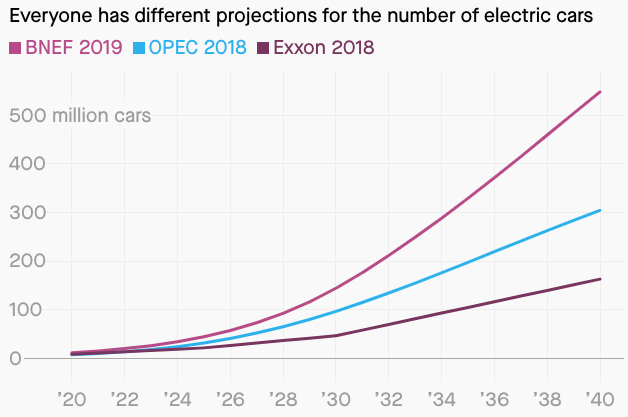As 2020 kicks off, expert firms show selected technology sector projections for the next decade, where AI, 5G and IoT figure at the very top.
In a world where consumers can purchase anything from shoes to stereos online, have packages drone-delivered, buy bananas at a 7-Eleven and a TV at Walmart, retailers of all stripes have to get creative to stay relevant.
With this in mind, and as the new decade begins its course, experts analyze the future of selected technology, and see smartphones with a 5G mobile subscription, artificial intelligence (AI), electric vehicles, and the Internet of Things (IoT) as the future of the market, with high predictions and numbers standing out with all of them.
According to reporting from Statista, IDC forecasts have global annual AI revenue growing to $98.4 billion by 2023, representing a Compound annual growth rate (CAGR) of 28.5% from 2019 to 2023. Artificial intelligence (AI) dominance is currently between two, as the United States and China are top of the charts when it comes to investment, talent, research and companies in the sector. The US and China both increasingly see success in AI as a national imperative, but to the extent that the countries are in a “race” to master AI, it’s one between Silicon Valley and China’s highly capable tech companies – not governments. Click here to see a full scorecard on how both countries are evolving in AI.
Elsewhere, the number of things connected to the internet is due to more than double from 2018 to 2030. A research study by Strategy Analytics projects that 38.6 billion devices will be connected to the Internet by 2025, and 50 billion by 2030. However, the report also concludes that the IoT revenue opportunity remains uncertain, particularly for service providers.
“With the global connected device installed base on track for nearly 40B by 2025, there is a huge opportunity for semiconductor display manufacturers, cameras, memory, battery and other enabling technology providers. AI will become pervasive in mobile, home, automotive and computing platforms. Optimizing the user experience across multiple devices, OS and user interfaces will be a key battleground,” says David Kerr, Senior Vice President at Strategy Analytics.
Speaking of the internet, the global rollout of 5G is set to be one of the largest tech projects of the new decade. In 2020, Ericsson says 1.1% of smartphones will have a 5G mobile subscription and by 2025 this will have shot up to 30.1%. Nevertheless, even as US mobile carriers are racing to invest in the next big thing in wireless, there is an important lack of user understanding of 5G, preventing carriers from fully enjoying the benefits of their new network technology. This lack of understanding is a major problem because it will hinder their ability to tap the $300 billion annual revenue opportunity for 5G connections by 2025.
The future of electric vehicles also seems very safe going into the twenties as the Electric Vehicle Outlook 2019 predicts there will be 10 million sold in 2025. By 2030, even this healthy figure is set to look like peanuts with a projection of 28 million. At the moment, according to Quartz, only one in 250 cars on the road is electric, however, electric vehicle (EV) sales hit 2.7 million in 2019, and even though projections are different, electric vehicles are no doubt a trend yet to expand.














